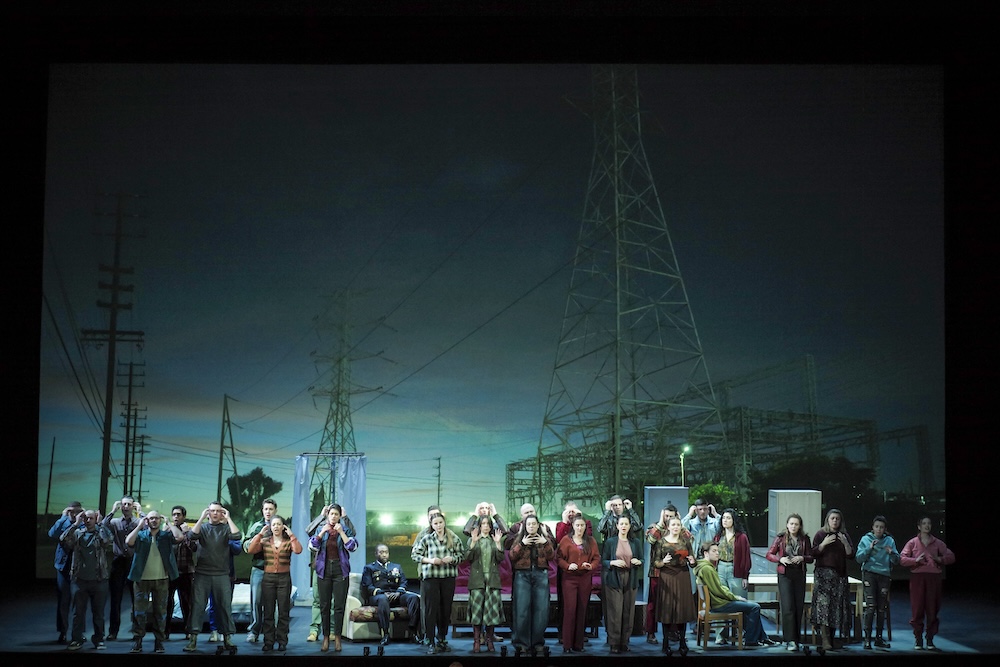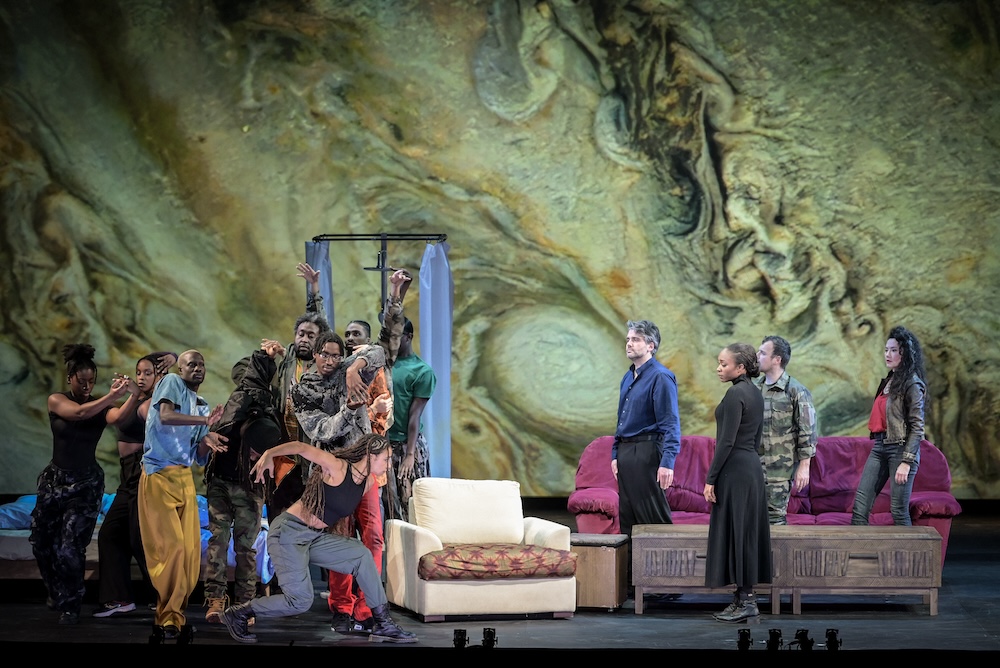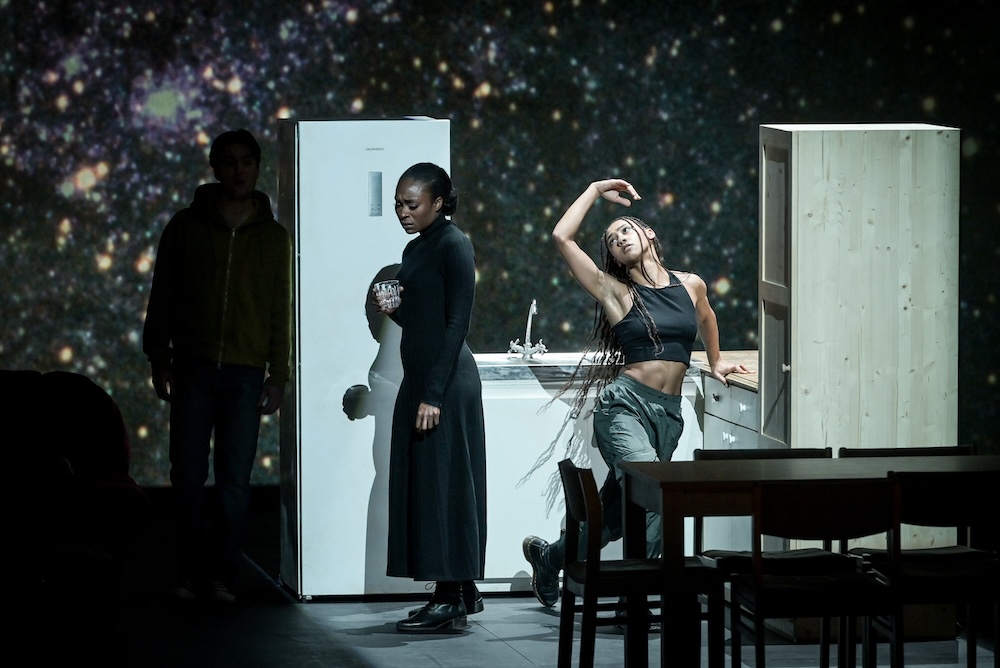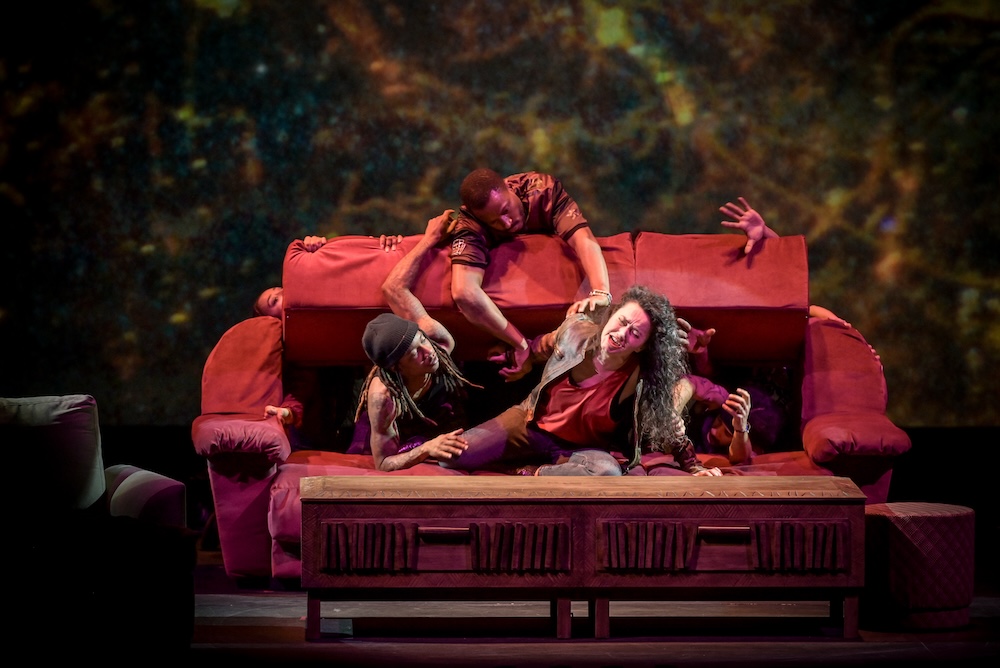Just when you thought DEI (Diversity, Equality, Inclusion) was dead, American stage director Peter Sellers brazenly enlisted 16 highly trained (various cool, pop styles) dancers of color from America, France and Africa to celebrate this old, courtly entertainment that first occurred in Cardinal Richelieu’s Palais Royale — in interpretive dance!
The plot thickens. In the pit for this 1737 Jean-Philippe Rameau masterpiece was Greek born, St. Petersburg trained conductor Teodor Currentzis and his orchestra, Musica Utopia, an ensemble aligned evidently with Western values — Mo. Currentzis also is founder and music director of his concurrent St. Petersburg orchestra musicAeterna, funded by the Russian state bank.
It was a highly theatrical evening, the maestro envisioning and performing extreme interpretive takes on French Baroque music. It was highly mannered musically, with extreme pianissimos and static, stopped tempos often occurring in the airs (arias), contrasting with the super boisterous intrusions of the chorus of Musica Utopia (the twin of the St. Petersburg’s musicAeterna choir). Not to mention the grandiose contrasts of musical textures that motivated much of the dances and dancing, when individual dancers were not interpreting the emotions of the airs.

The performance was musically so pushed, embellished by the performative antics of the maestro, that we were left with no time to appreciate Rameau’s audacious harmonies and orchestrations, remarkable in their time and admired throughout the history of Western music.
Castor et Pollux is a tragédie lyrique, a French form that adds sung text, music and dance to classical French tragedy. In its pristine stages (as in this production) it consists of an overture and an allegorical prologue, then five acts (like Corneille and Racine). Its subjects are mythological that devolve in a combination of recitatives, ariettes, and lots of orchestral interludes with dance.
Castor et Pollux is Rameau’s third tragédie lyrique. Hippolyte et Aricie was the first, Samson, the second, was never performed, its score lost. Though Samson was reimagined last summer at the Aix Festival by Raphaël Pichon and his orchestra Pygmalion where Rameau’s magnificent orchestrations did shine through a weird concept production by German stage director Otto Guth.
As is usual in a Peter Sellars production, opera is not colorblind. Much expressive emphasis is placed on the participation of populations foreign to the European operatic traditions. Not only does this participation reflect the ethnic and political complexities of the modern world, it also adds an exotic tone that enlivens our focus on a work of art. Such was the case with this production, its dancers wildly cheered by the audience, its conductor enthusiastically applauded as well.

Though titled Castor et Pollux the emotive focus is on Pollux’s bereaved fiancé Têlaire sung by Trinidad soprano Jeanine De Pique. Of ample voice, revealed the few times she let loose (she will sing Traviata at the Berlin Staatsoper), she was able to sustain the extreme pianos and leaden tempos imposed by the maestro with expressive aplomb. Of a genuine diva presence she was able to hold the stage throughout the interpretive dancing that accompanied much of her performance.

Famed French soprano Stéphanie d’Oustrac sang Phébe, the fiancé of Castor. There was no mistaking that Mme. d’Oustrac is a diva, adding to the stage hints of her vivid portrayals of Charlotte (Werther) and Carmen (et al). She was in fine voice and figure, returning to the repertoire of the first moments of her considerable career. She was notably the senior member of the cast, puzzling us as to how and why she found herself there.
The actual tragic mechanics of the opera were Pollux, who loves Castor’s fiancé Télaire, but must sacrifice his life to bring Castor back to life, and Castor who must sacrifice his life to bring Pollux back to life. The brothers (lead photo) were ably portrayed by French bari-tenore Marc Mauillion as Pollux, and Belgian tenor Reinoud Van Mechelen as Castor. Both are greatly credentialed Baroque singers who created effective characters.
The prologue was sung by British (American and French formed) tenor Laurence Kilsby as Amour, French soprano Claire Antoine sang the goddess Minerva while the god Mars was richly sung by American bass Nicholas Newton who later appeared in extended scenes as Jupiter (who cannot save Castor from Hell, but in the end manages to reunite everyone with their rightful partners). Russian soprano Natalia Smirnova appeared in the prologue as Venus but did not speak, and reappeared later to sing a virtuoso aria as a delightfully happy resident of Hell.

Lebanese designer offered us some furniture of a modern apartment for the benefit of the dancers to jump on and off. The amazing theatrical machinery of Baroque theater was reduced to a sofa through which the spirits of Hell magically emerged one by one, and through which Phébe (Mme. d’Oustrac) was dragged back down into Hell.
The action of the opera was played against a massively huge video backdrop created by Alex Macinnis who is known for his video history of L.A., titled Valley of Smoke. Though in Paris it was a concrete city with trucks on elevated roadways for the prologue and the happy ending, the video becoming abstract shapes and starry nights in front of which Sellars staged the tragic action as interpreted by the dancers. The costuming by frequent Sellars collaborator Camille Assaf. It was random, casual contemporary, with the exception of the lighted dress of the sprites of Hell. Télaire, however, was always in a severe (unadorned) black dress of mourning. The subtle, effective lighting was effected by Sellars collaborator James F. Ingalls.
Michael Milenski
Palais Garnier, Paris, France, February 13, 2025
All photos copyright Vincent Pontet, courtesy of the Opéra national de Paris